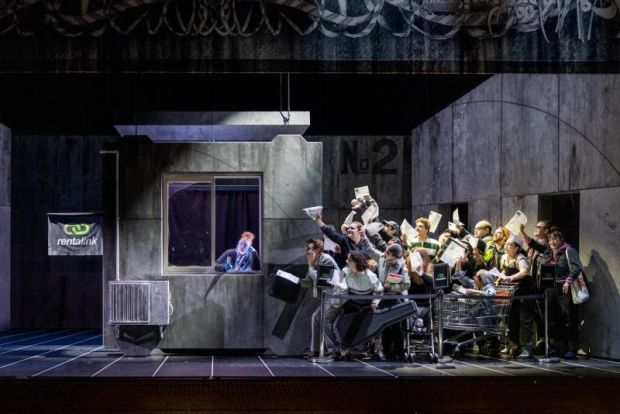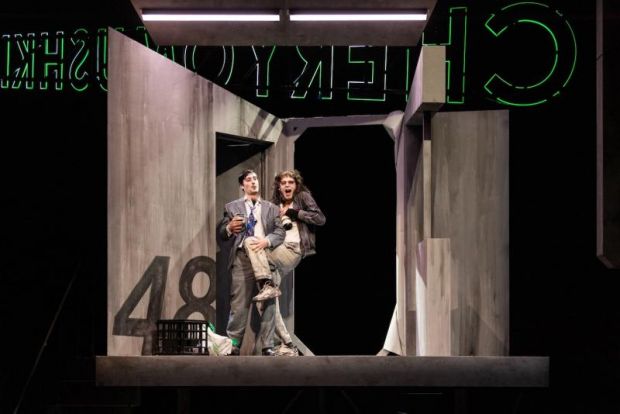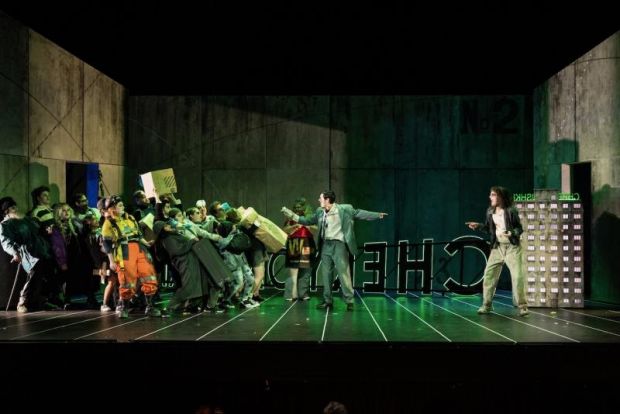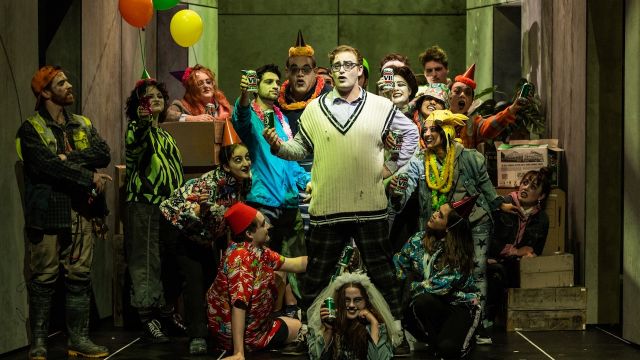Melbourne, Cheremushki
This operetta is a departure from Shostakovich’s usual music style, but the dynamic music combined with an equally lively libretto create a vibrant text with definite shades of black comedy. The story centres around the chronic shortage of housing in the Soviet capital in the 1950s and directly criticises the defective political machinery of the day. The decision to adapt the story to Melbourne rather than Moscow is a clever one, given the political sensitivity of the location and the relevance to Melbourne’s lingering and worsening housing crisis.

The music and the singing are wonderfully executed, and the extremely fine performances are a great highlight of the show. The entire cast, including the choral singers, all have the opportunity to shine. The delivery of the comic elements is less cohesive. The Melbourne elements are seamlessly inserted into the story and the recontextualization generally works very well. However, the biting satire that the Soviet context suggests could have been emphasised more. The terrible corruption and scheming involved in the allocation of the housing, typical of Moscow, is cast as merely facetious and irritating in Melbourne. This takes some of the sting out of the humour and a tendency to rely on a performance style that is oriented towards slapstick to convey the comedy. The characterisations are somewhat locked into their Moscow stereotypes rather than restyling them for a Melbournian context.

The set creates an atmosphere full of intrigue; grey concrete slabs dominate the stage and portray the grim quality of the accommodation and society extremely well. There are some delightful specific geographical references to Melbourne, although the minor allusion to commission housing could have been developed as a way of emphasising the political edge of the original text. The set is designed with some interesting elements of colour and a good versatility with its use of space. Both the large outdoor areas and the cramped quality of indoor areas are effectively portrayed. Details such as neon lighting and communal gardens add some valuable and important detail. However, the frequent set changes make the transition between scenes busy and sometimes interrupts the flow of the performance.

This is a bold and daring adaptation of a unique and rarely performed operetta. The production has some really bright ideas that would have benefitted from some further consideration and refinement.
Patricia Di Risio
Photographer: Charlie Kinross.
Subscribe to our E-Newsletter, buy our latest print edition or find a Performing Arts book at Book Nook.

